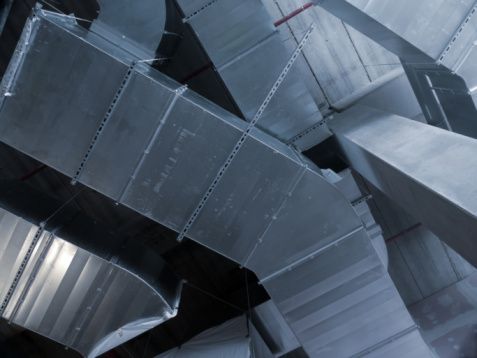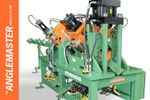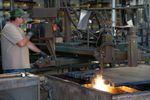Industrial workers often work in confined spaces, which include industrial ductwork, tanks, and hoppers. All of these spaces can be dangerous if they aren’t engineered properly or approached with caution because workers can be exposed to hazards such as toxic substances, excessive heat, and oxygen deprivation while working in them.
To mitigate the risks to workers, OSHA recently established safety guidelines for the use and construction of confined spaces specifically for construction workers and construction sites. These rules went into effect on August 3, 2015 and include nearly all spaces related to industrial ductwork, such as boilers, incinerators, HVAC ducts, vessels, air receivers, air preheaters, turbines, chillers, and bag houses, as well as numerous other industrial workspaces.
You can read about the new regulations by downloading OSHA’s official publication on the subject, but here’s a quick summary.
Let’s take a moment to understand how OSHA defines confined spaces. OSHA considers a confined space any space that:
- Is big enough for an employee to enter
- Has restricted means of entry and exit
- Will not be continuously occupied
Per their definition, there are confined spaces that aren’t considered dangerous to the point that they must meet the new safety guidelines. These are “non-permit spaces.”
Confined spaces that do need to follow the guidelines are called “permit-required confined spaces” or “permit spaces.” Per OSHA, a confined space should be designated permit space if:
- It has the potential to contain a hazardous atmosphere (e.g., a flue gas duct)
- Contains material that can engulf a person (e.g., a grain silo)
- Has walls that converge or taper (e.g., a hopper)
- Exhibits other safety or health hazards such as unguarded machinery, live wires, or excessive heat
Why Industrial Ductwork Is a Permit Space
Industrial ductwork will typically qualify as a permit-required confined space because it meets OSHA criteria no. 1, 3 or 4 for determining if a confined space should be designated a permit space.
For example, welding exhaust ductwork has the potential to contain a hazardous atmosphere. HVAC ducts have lots of tapering sections. And boiler ductwork will often include unguarded machinery (e.g., draft fans) and be subject to excessive heat.
These safety concerns, along with the heavy abuse industrial ductwork has to endure during operation, are why fabricating heavy ductwork is a careful and detailed process.
Strategies for Protecting Workers in Confined Spaces
OSHA offers a number of strategies for protecting industrial workers who access permit spaces. Most of these involve procedures for use, such as posting signs restricting entry, testing atmospheric conditions, and implementing procedures for entry and exit.
But properly designing permit spaces in the first place can also help reduce many of the hazards that come into play when workers enter or exit these spaces. This is crucial because these transitions often present the main sources of danger for employees. If a space can’t be exited easily during an emergency, it becomes exponentially more injurious or fatal.
One can mitigate entry and exit risks up front during fabrication by:
- Including non-cumbersome industrial access equipment
- Making doors easy to open
- Creating openings big enough for employees to fit through
- Removing obstructions
- Designing spaces so that only short distances need to be covered to reach safety
For help fabricating industrial ductwork and other material handling equipment that qualifies as permit confined spaces — such as bins, hoppers, silos, and tanks — please contact us. We’ve got lots of experience in this area and can help design and fabricate industrial equipment that will not only be compliant; it will help avoid exposing employees to unnecessary dangers.





